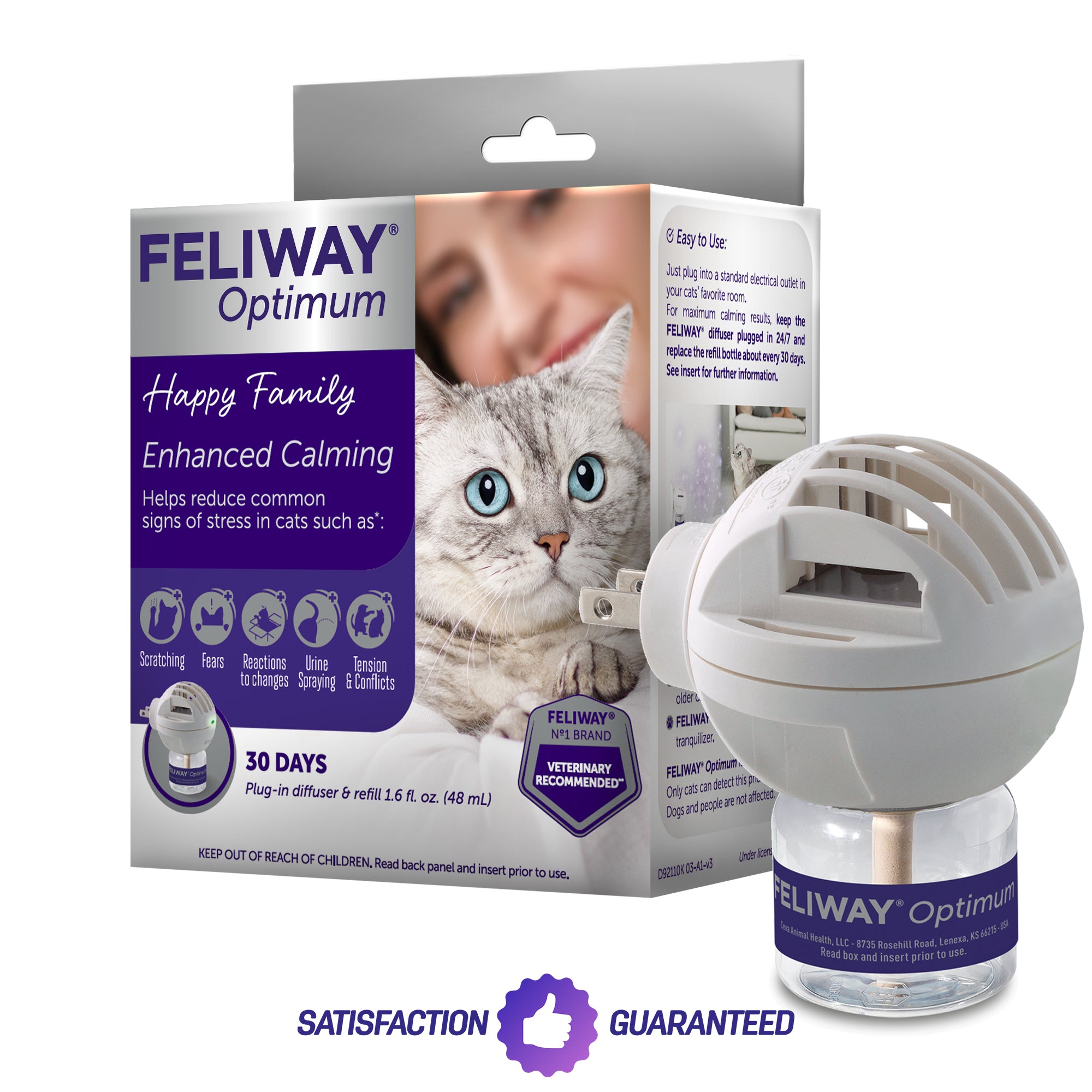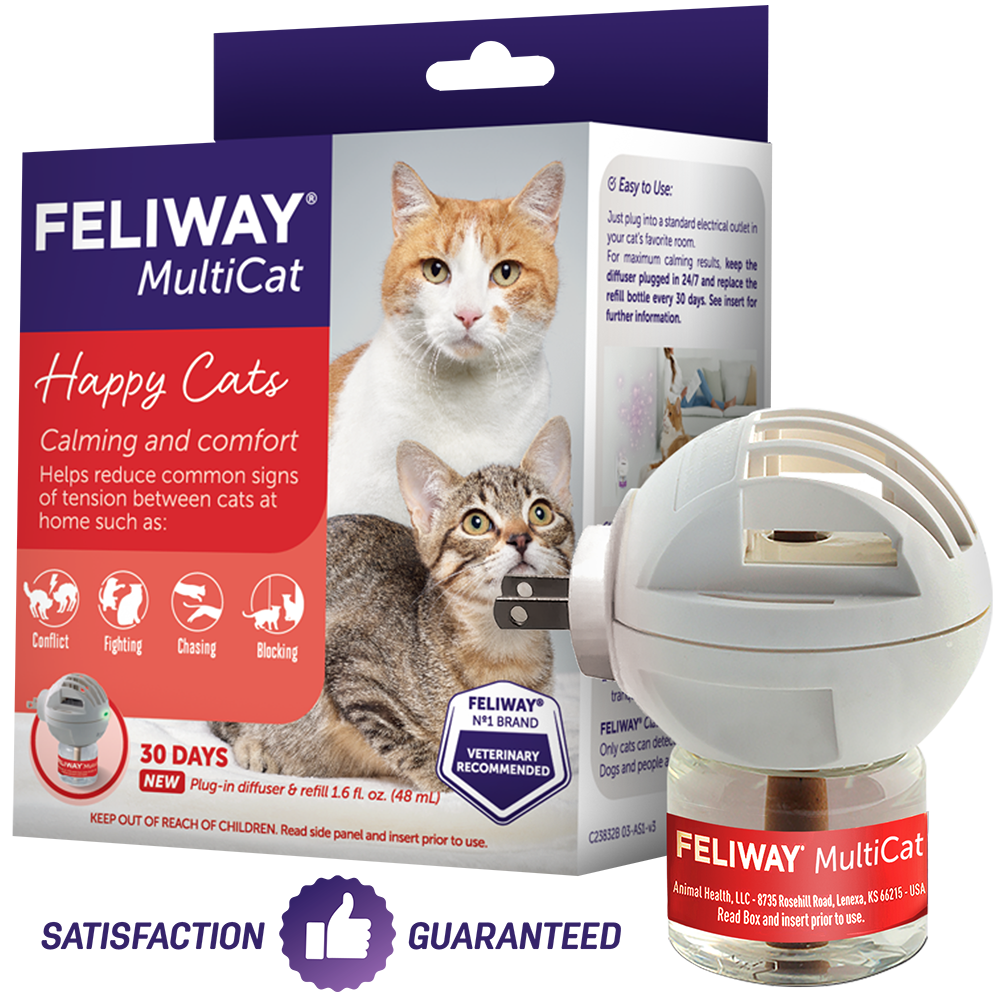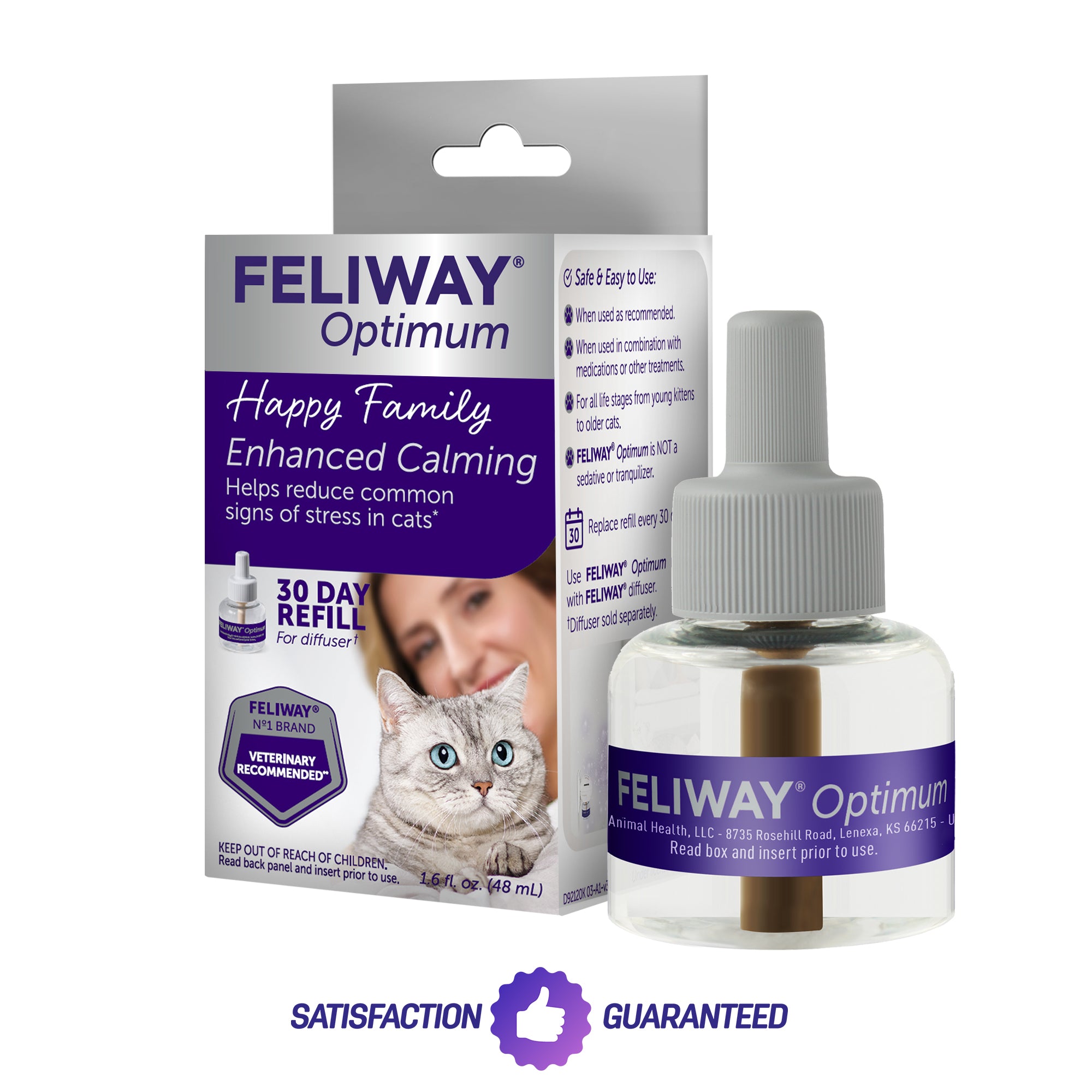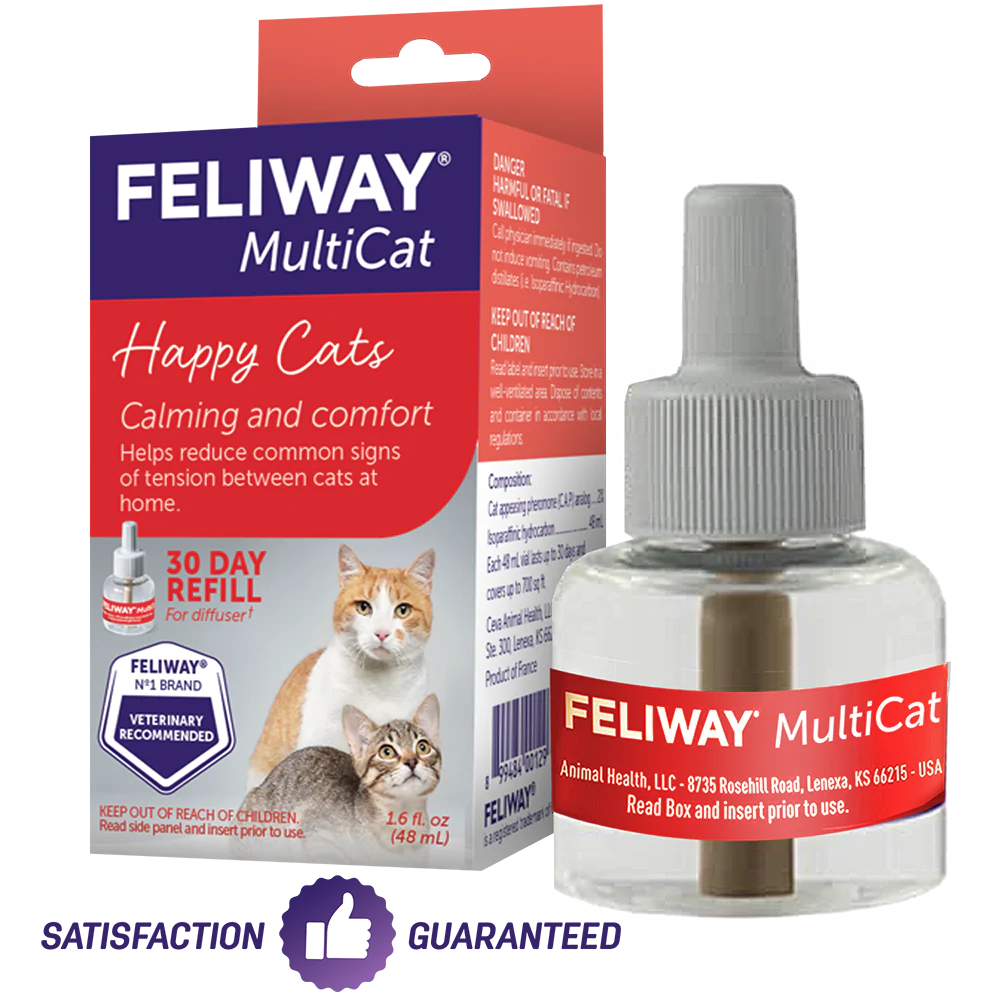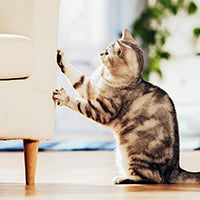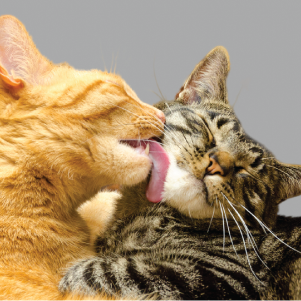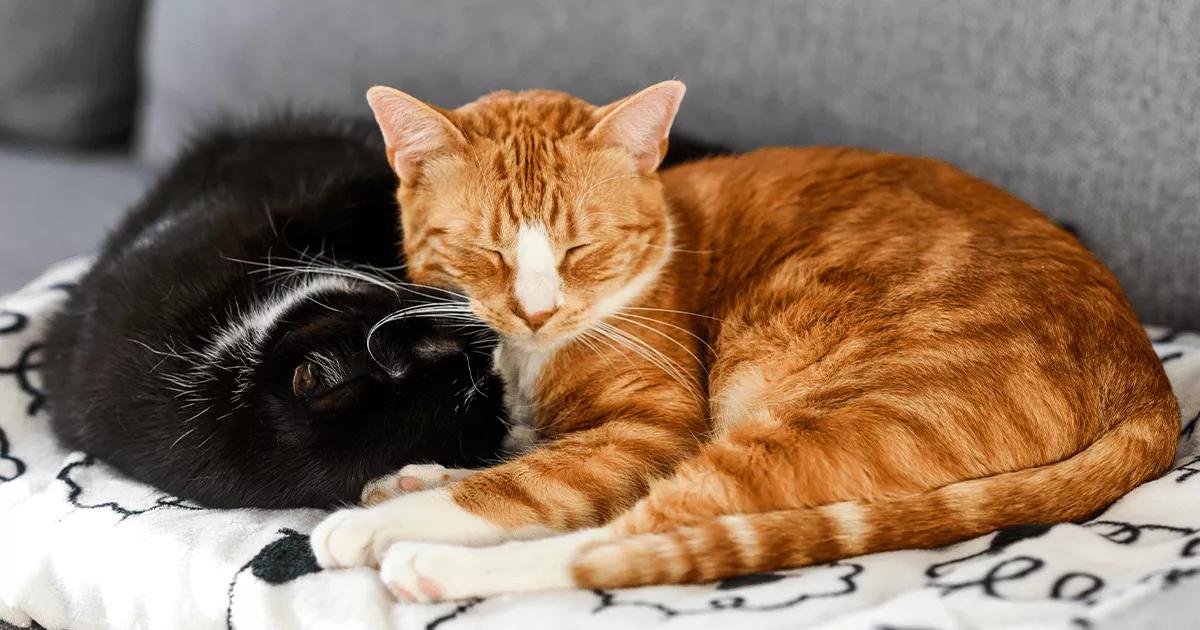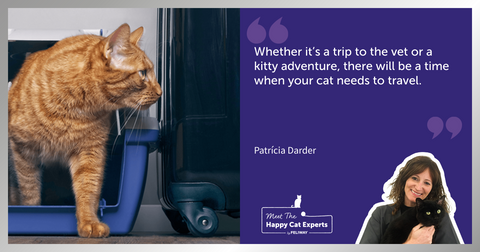
Happy Cat Expert Explains: How To Introduce A New Cat To Your Resident Cat
Bringing a new cat into your family is often an exciting time. You buy new toys and a climbing tree, stock up on cat food and decide where the new kitty bed (or two) should go. It’s tempting to assume your best intentions will be enough to guarantee harmony in the household. However, if you already have one or more cats in your home, it’s important to plan how you are going to introduce the felines to each other. This will improve the chances for long-term success.
You may be planning to bring in the new cat and “see what happens.” Sometimes that works out, but not always, and a few early conflicts could start a lifetime of cat confrontations. An intentional, stepwise introduction of a newcomer to a resident cat (or cats!) decreases the risk of fights between them and is more in alignment with how this process happens in a natural setting.
In the wild, newcomers to the group live first on the periphery. This means they spend their time on the edge of the social group, slowly integrating as they get to know members of the kitty colony. But that’s not always what happens for newcomers who land in a cat-occupied home with walls and doors, and no way to ease their way into new relationships!
By introducing the cats in a series of steps, you can pause and assess the developing relationship(s) at several points along the way. At each step, use the “stoplight” approach:
- Green means it’s going well and you can move on to the next step.
- Yellow means you may need to repeat the current step a few times until you can reach green.
- Red means you need to stop and reevaluate your strategy.
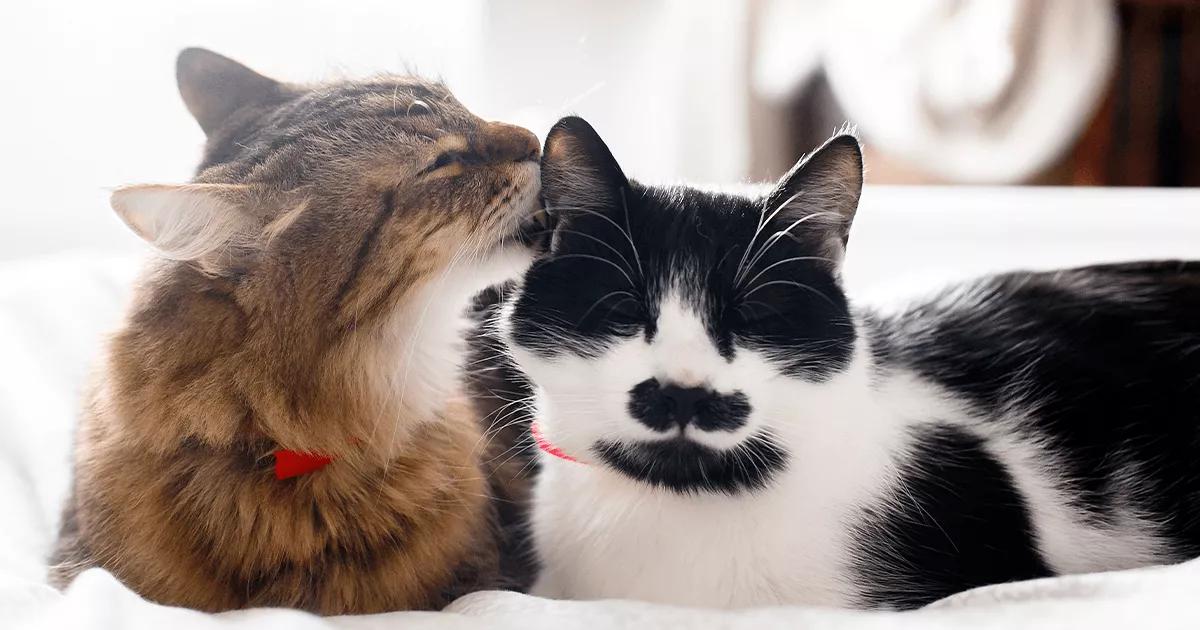
Steps to Introduce Your New Cat to a Resident Cat
Step one: Take a break!
Your new cat needs time to shake off the travel stress and adjust to their new home. Provide them their own area of the home, with access to their own food, litter box and sleeping area, and watch for signs that they are settling in comfortably (using the litter box, eating well, engaging in grooming behaviors, etc.). When they have settled in and are less stressed, which may take a few days, they’re likely to be better equipped to make new friends.
Step two: Transfer scents.
Rub a small, soft cloth gently on your resident cat’s face, cheek, and neck to pick up their scent and pheromones. Repeat this process with the same cloth for your new cat, and then take it back again to your resident cat.
Use the stoplight approach — green, yellow and red — to judge how each cat reacts. If you notice signs of stress, agitation, or avoidance (red!), stop and try again later. If a cat is stressed, they may hiss, spit or swat at the cloth. They may wrap their tail close to their body. Ears may go back, eyes become big and round, and their hair may stand on end.
When a cat ignores the cloth, they are likely at yellow and may benefit from a few additional sessions. If the cat begins to rub against the cloth, they are at green and ready for the next step.
Step three: Look but don’t touch.
Identify a location in the home where the cats can see each other without making physical contact. You can put each cat in a room across or down the hall from each other, but block their ability to move closer to one another with stacked baby gates or another screen-like barrier. It may be necessary to block gaps over gates with cardboard or another physical object to prevent the cats from climbing or jumping over.
Allow the cats to have this “protected contact” access to one another several times per day, if possible. Pair these introduction sessions with something enjoyable for each cat, such as treats, food, brushing, playtime, or petting and verbal attention from you. With repeated exposure, the cats will learn to associate each other with activities they enjoy.
In addition to signs of stress, look for signs of relaxation too. Comfortable cats will have a soft facial expression with relaxed ears. Their eyes will be almond-shaped, not big and wide. Their tail will stand up straight with a tiny curl at the tip. They may be comfortable playing with a toy or doing slow, luxurious self-grooming, or they may rub against the gate/barrier.
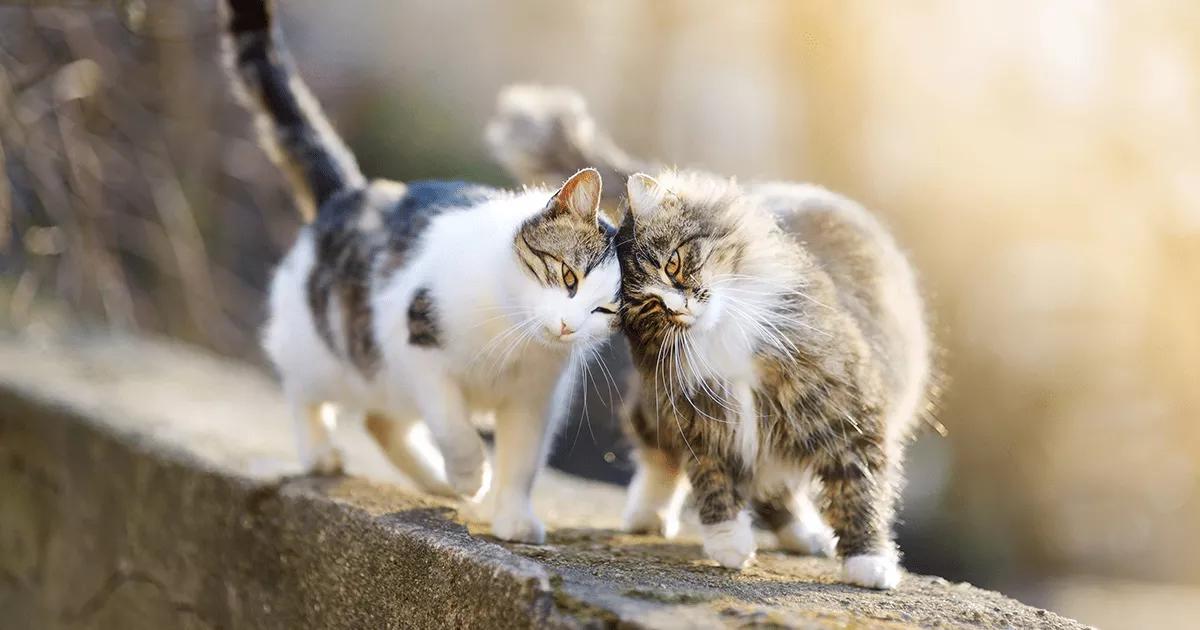
Step four: Start physical contact.
Remove the barriers and allow the cats to interact briefly (perhaps just a few minutes at first, and then separate them again until the next session). Remember your stoplight approach and look for signs of agitation versus relaxation, and pair this with an enjoyable activity such as feeding them at the same time.
Step five: Welcome home.
Once the cats are consistently relaxed in each other’s physical presence, you can move on to the final step of allowing the cats to fully live together. Continue to monitor their behavior closely. Provide enjoyable activities for enrichment, and entertainment and to continue those positive associations!
The timeline for this stepwise approach varies from cat to cat. That’s why the stoplight approach and repeated evaluations are important. Using FELIWAY Optimum as a source of calming pheromones can help to support this process.
If you have more than one cat already in your home, you can still use this same stepwise process, but modify it slightly to introduce your new cat to each resident cat either individually or as a group. Continue to monitor for signs of agitation versus comfort and repeat the steps until all cats are comfortable in their new relationships.
If you encounter any roadblocks that you’re not sure how to address, ask your veterinarian for support or for a referral to a qualified trainer or behavior consultant who can provide additional recommendations.
